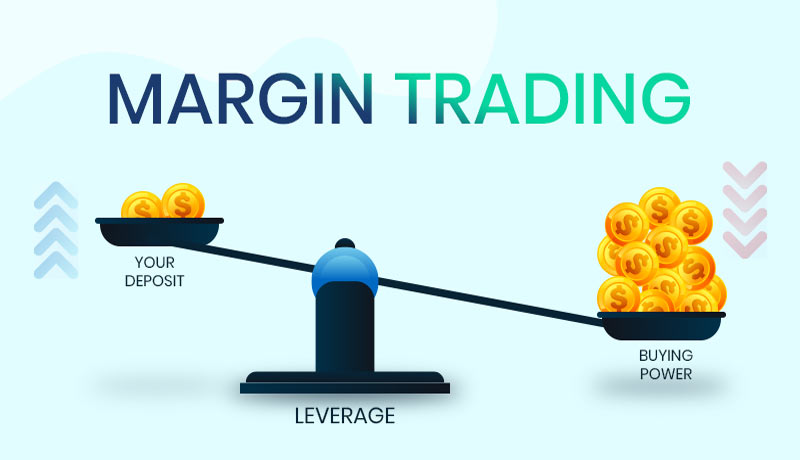What is Leverage? Profit strategy with low capital
Financial markets such as Forex and digital currencies are full of different strategies, each tailored to specific circumstances and has its applications. As a person who operates in this market, you should be familiar with their types and know their proper use. One of the most widely used strategies in this market is leverage, which we will explain below, what it is used for, and its advantages and disadvantages.
What is Leverage?
Leverage is one of the trading strategies in Forex and other financial markets such as Ramzarz. Leverage transactions are the ratio of customer balance to account balance used to open a trade. With the help of leverage, you can operate in this market with more significant amounts than your inventory. Leverage is an investment strategy to use the money borrowed from brokers or exchange offices to increase the potential return on investment that allows the broker to participate in the transaction. In addition, leverage transactions can refer to the amount of debt that a company uses to finance its assets. 
Leverage is not credited to anyone and only affects the margin. The lever can vary in different ratios from 1: 1 to 1: 1000. Investors use leverage to increase their purchasing power in the market even several times. Companies also use financial leverage to secure their assets. So it seems that everyone can benefit from it.
Features of leverage
Leverage is debt (borrowed capital) to make an investment or project. As a result, using it increases the potential efficiency many times over. When we say that a company has assets or investments with high leverage, the amount of debt or loan is more than assets.
Both investors and companies use a leveraging strategy. With the help of leverage strategy, investors can borrow and invest several times their original capital from exchange offices or brokers. Thus increasing the return on their project. Instead of issuing stocks to raise capital, companies can also use leveraged funds to lend money to invest in business operations to increase shareholder value.
The difference between leverage and margin transactions

Although leverage and margin are related and refer to borrowing, the two terms are not the same. Power relates to lending, while margin is the debtor borrowed money that a company uses to invest in other financial instruments. A margin account allows you to borrow from an exchange office or broker at a fixed interest rate to buy cryptocurrencies, securities, options, or futures contracts and earn a substantial return. In addition, you must use the margin to create the lever.
Leverage Benefits
Leverage has many advantages in the market, some of the most important of which are as follows:
Powerful access to capital
By trading leverage, it multiplies the power of any money you use. If force is used successfully, leveraged financial resources will yield far more returns than leverage. In fact, with the help of power, you can raise capital with very little investment and with the help of debt.
Ideal for shopping
Because of the additional costs and risks of increasing debt, leveraging is excellent for short periods where your business has specific development goals, such as buying digital currency, repurchasing stocks, or lump sum dividends. 
Disadvantages of leverage
Every successful strategy has its downsides. In the case of this strategy, the following disadvantages should be noted:
It’s a risky form of trading
A loan is a financial source that can help a business grow faster. Leverage financing is even more robust, but higher-than-usual debt levels have problems and can put a business in too much leverage, increasing risk. There is a risk that the company will use power too much, which in l result in no benefit from using the lever.
Leverage deals are expensive!
Leveraged financial products pay higher interest rates, such as leveraged loans and high-yield bonds, putting investors at greater risk.
The lever is complex.
Financial instruments are more complex in leverage. This complexity requires more management time and involves a variety of risks. Power increases both profits and losses. If the investor uses influence to invest and moves against him, their losses are much more significant than when they did not use the leverage. 
Because of these disadvantages (and especially the likelihood of further losses), investors should not use its trades in the first place. They should avoid them until they have sufficient experience to do so. A company can use this trading to create shareholder wealth in the business world, but if it fails, the cost of profits and the risk of default credit will destroy shareholders’ profits.
Also: Everything you need to know about Binance exchange
Example of transactions
The $ 5 million company was founded by investors in which the equity is $ 5 million; This is the money that the company can use to operate. If the company uses a $ 20 million loan, it now has $ 25 million to invest in business operations and more opportunities to increase shareholder value. For example, a carmaker can borrow to build a new factory. The new plant will enable the automaker to increase the number of production vehicles and thus its profits. By doing so, he can both repay his loan and raise his capital.
Concluding remarks
Trading is a proven and valuable strategy for operating in a low-capital market and making money in the digital currency market, but only if used correctly and people have enough experience to use it. Otherwise, it becomes a double-edged sword and can inflict heavy losses and debts on companies, investors, and traders alike.











